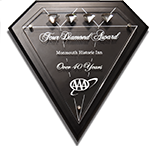“Cavalier Arabe”
“Cavalier Arabe” – 19th Century French Bronze Statue by Emile Guillemin
In the Quitman Lounge – above the bar – you will find an exquisite bronze statute. I was fascinated by this statue from the moment I saw it. While doing some “cleaning” at Monmouth, Carol Jones, our Assistant Manager, called me to come look at something she’d come across and it turned out to be “Cavalier Arabe.” Researching this statute has been both rewarding and somewhat personal for me. One of my ancestors was named Guillerman and lived in France in the 17th century. However, the spelling of the name is different, and my ancestor’s last name was Montegut. Maybe the surname of his mother was Guillerman and it was given as his first name, but I cannot be sure, so I am not sure I am related to this artist.
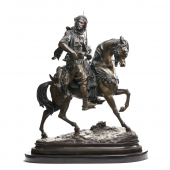
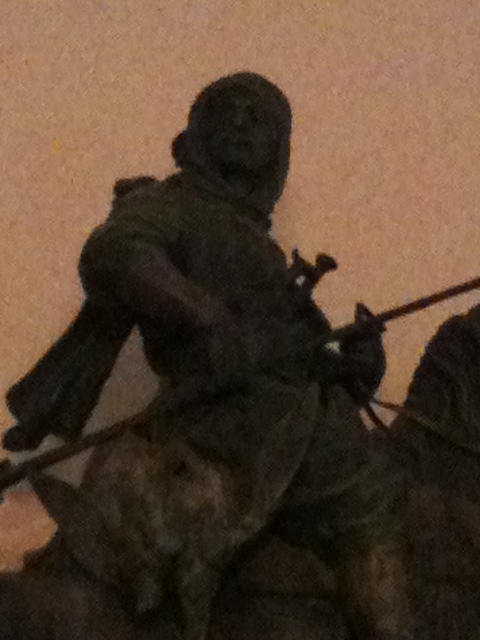

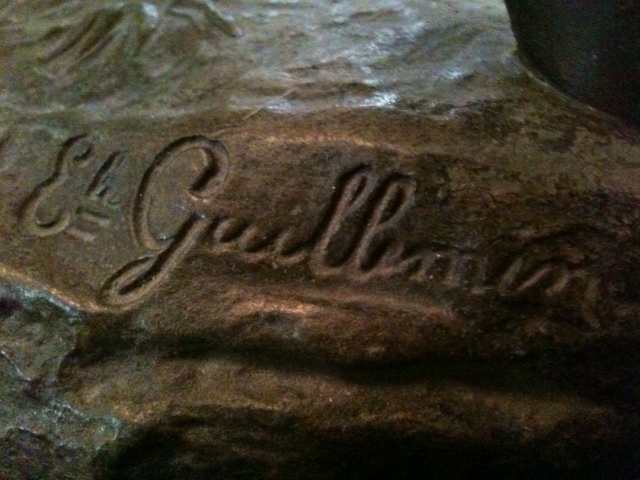
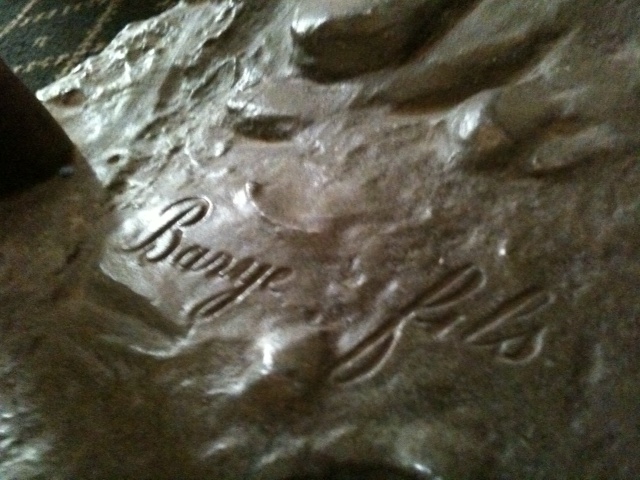
Research has revealed that this piece is an elegant late 19th century French bronze patinated metal statue by Emile Guillemin (1841-1907), cast from a model by Alfred Barye and Emile-Coriolan-Hippolyte Guillemin, entitled “Cavalier Arabe.” In particular, this imposing Oriental equestrian statute of an Arab Horseman mounted upon a prancing horse, a dead gazelle slung behind his saddle, upon an oval naturalistic base, is based on the bronzes of Alfred Barye, who passed away in 1882, and inspired a series by Guillemin. The cast is signed “Barye; fils” and “E. Guillemin.”
The collaboration between these two fine sculptors during their maturity, encapsulates the exotic and romantic elements that pervaded French sculpture throughout the nineteenth century. These two sculptors were both born in Paris, within a few years of one another. Barye was born on January 21, 1839, and Guillemin was born on October 16, 1841. It always arouses interest when we find collaboration between artists, and study usually provides insight into their working methods, and highlights similarities and differences between the artists. Both Barye and Guillemin studied under their fathers and demonstrated talent for modelling animalier, as well as Oriental subjects, later in life.




